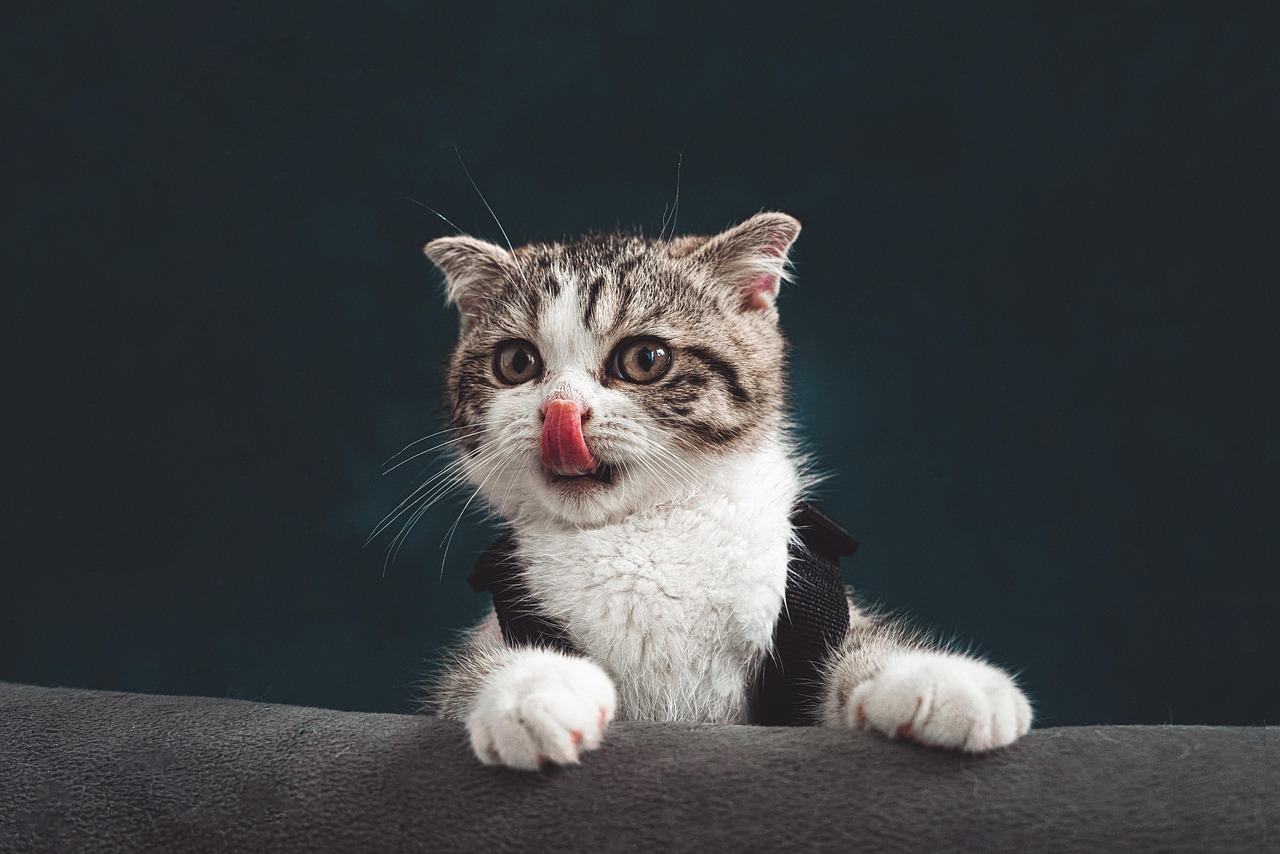When a cat licks you, it often signifies affection, bonding, or grooming behavior. Cats have a strong instinct to groom themselves and their companions. This behavior can also indicate comfort or submission, showing that they trust you as part of their social group.
Understanding Cat Licking Behavior
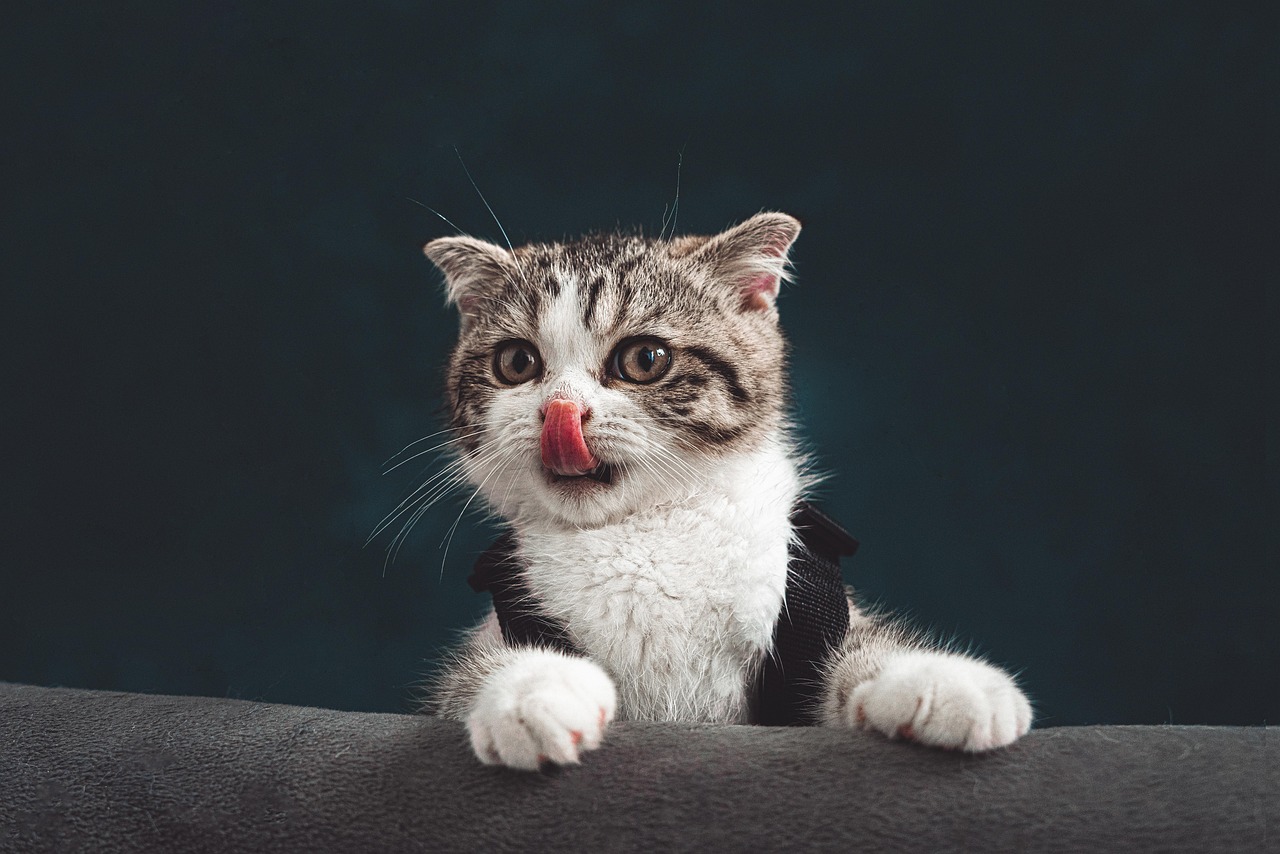
Cats are fascinating creatures with complex behaviors. One common action that many cat owners experience is being licked by their feline friends. This behavior can be puzzling, especially for new cat owners. Understanding why cats lick can help strengthen the bond between pet and owner. It can also clarify your cat’s emotional state and needs.
Licking is a natural instinct for cats. It serves various purposes, including cleaning themselves and their companions. In the wild, cats groom each other as a way to build social bonds. When your cat licks you, it may be trying to communicate affection or reinforce its connection with you.
Additionally, some experts believe that licking can be a form of stress relief for cats. The repetitive action of licking may help them feel more relaxed and secure in their environment. Thus, if your cat licks you, it might be expressing comfort or seeking reassurance.
Reasons Cats Lick Their Owners
There are several reasons why a cat may lick its owner. Understanding these reasons can enhance your relationship with your feline companion.
- Affection: Licking is a sign of love. When cats lick you, they often do so to show they care.
- Grooming: Cats are meticulous groomers. They may extend this behavior to you as part of their social grooming rituals.
- Comfort: Licking can provide comfort for both the cat and the owner. It may indicate that your cat feels safe with you.
- Marking Territory: Cats have scent glands in their mouths. Licking you could be a way of marking you as part of their territory.
- Seeking Attention: If your cat wants your attention, licking can be a way to engage you in interaction.
The Science Behind Licking
The act of licking has scientific explanations rooted in feline behavior. Kittens learn to lick from their mothers shortly after birth. This early grooming helps them bond and feel secure. As cats grow older, they continue to use licking as a means of communication and bonding with others.
Moreover, the texture of a cat’s tongue plays a crucial role in this behavior. A cat’s tongue is covered with tiny, hook-like structures called papillae. These papillae help cats remove loose fur and dirt from their coats while grooming. When they lick you, it may feel scratchy but is generally harmless.
When Licking Becomes Excessive
While occasional licking is normal and often welcomed by pet owners, excessive licking may indicate underlying issues. If your cat licks obsessively, it could be a sign of stress, anxiety, or even a medical problem.
Here are some signs to watch for:
- Frequent Licking: If your cat licks for long periods without stopping.
- Bald Spots: If licking leads to hair loss or skin irritation.
- Behavior Changes: If your cat becomes withdrawn or shows signs of distress.
If you notice these signs, consult with a veterinarian. They can help determine if there is an underlying medical condition or behavioral issue that needs addressing.
Conclusion of This Section
Understanding why cats lick provides valuable insight into their emotional world. It strengthens the bond between you and your pet. By recognizing when licking is normal versus when it may be problematic, you can better care for your feline friend and ensure they remain happy and healthy.
Different Types of Licking Behavior
Cats exhibit various licking behaviors, each with its significance. Understanding these different types can help you interpret your cat’s actions better. Here are some common behaviors associated with licking:
Self-Grooming
Self-grooming is a natural behavior for cats. They spend a significant portion of their day grooming themselves. This behavior serves multiple purposes:
- Hygiene: Cats lick themselves to remove dirt, debris, and loose fur.
- Temperature Regulation: Grooming helps cats cool down by spreading saliva on their fur.
- Comfort: The act of licking can be soothing and helps them relax.
Social Grooming
Social grooming, also known as allogrooming, occurs between cats that share a close bond. When one cat licks another, it reinforces their social structure and shows affection. This behavior is especially evident in multi-cat households.
Social grooming can also serve as a stress-reliever for cats. It promotes feelings of safety and comfort among those who participate in the behavior. If your cat licks you, it may be treating you like one of its own kind, indicating trust and affection.
Playful Licking
Sometimes, licking can occur during playtime. Cats may lick each other or their owners when they are in a playful mood. This type of licking is often accompanied by other playful behaviors, such as pouncing or batting at toys.
Playful licking can be a way for your cat to engage you in fun activities. If your cat licks you while playing, it may be inviting you to join in on the fun or simply expressing joy.
Understanding the Context of Licking
The context in which your cat licks can provide additional insight into its intentions. Here are some scenarios to consider:
After Eating or Drinking
If your cat licks you after eating or drinking, it may be expressing contentment or seeking affection. Cats often groom themselves after meals to clean up any food residue from their faces. If they turn to lick you, it may indicate they feel satisfied and comfortable in your presence.
During Stressful Situations
Cats may lick more frequently when they are stressed or anxious. This can occur during loud noises, changes in their environment, or new people in the home. Licking may serve as a coping mechanism for your cat during these times.
In such cases, it’s essential to create a calm environment for your pet. Providing safe spaces and comforting items can help alleviate your cat’s stress and reduce excessive licking.
Licking During Cuddling
If your cat licks you while cuddling or resting close by, it is likely a sign of affection. Cats often groom their companions when they feel relaxed and secure. This behavior strengthens the bond between you and your cat, showcasing their love and trust in you.
What to Do If Your Cat Licks You Excessively
If your cat’s licking becomes excessive, it may require attention. Here are some steps to take if you find this behavior concerning:
- Observe: Keep an eye on your cat’s licking habits. Note any changes in frequency or intensity.
- Assess Environment: Look for any changes in the environment that could be causing stress. This could include new pets, moving furniture, or changes in routine.
- Consult a Veterinarian: If excessive licking persists or is accompanied by other concerning behaviors, seek advice from your veterinarian.
- Provide Enrichment: Engage your cat with interactive toys, playtime, and environmental enrichment to reduce stress and boredom.
Taking these steps can help identify the cause of excessive licking and improve your cat’s well-being. Being attentive to your cat’s behavior is crucial for maintaining a healthy and happy relationship.
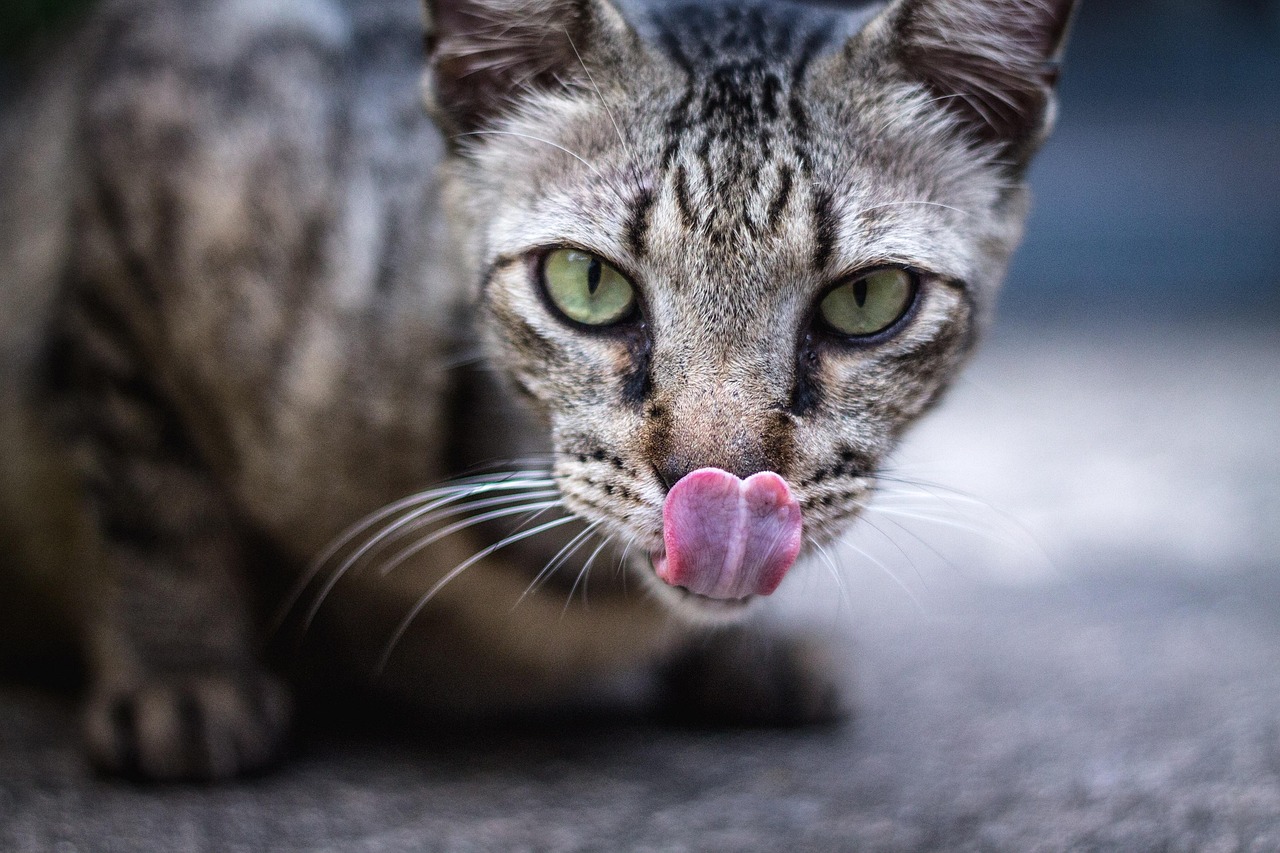
The Role of Body Language in Cat Licking
Understanding your cat’s body language can provide additional context to their licking behavior. Cats communicate a lot through their body posture, tail movements, and facial expressions. Observing these cues can help you interpret why your cat is licking you or itself.
Tail Position
The position of your cat’s tail can indicate its mood. A tail held high typically signifies confidence and happiness, while a low or tucked tail may suggest fear or submission. If your cat licks you with its tail held high, it likely feels safe and affectionate. Conversely, if it licks while its tail is low, it might be feeling anxious or stressed.
Ears and Eyes
Cat ears also tell a story about their emotional state. Ears pointed forward indicate curiosity and positivity, while ears flattened against the head suggest fear or aggression. If your cat licks you while its ears are forward and eyes are soft, it is likely expressing affection. However, if the ears are back and the cat seems tense, the licking could be a sign of discomfort or stress.
Purring and Other Sounds
Purring often accompanies licking, indicating that your cat is content. If your cat licks you while purring softly, it is a good sign that it feels comfortable and loves being close to you. Other sounds, such as hissing or growling during licking, may indicate that your cat is feeling threatened or uneasy.
Health Considerations Related to Licking Behavior
Licking can sometimes be linked to health issues. It’s essential to monitor your cat’s overall health in conjunction with its licking habits. Several medical conditions can lead to increased licking, including:
Allergies
Cats can develop allergies to food, environmental factors, or parasites like fleas. Allergic reactions may cause itching or irritation, prompting your cat to lick affected areas excessively. Signs of allergies include:
- Itching: Frequent scratching or excessive grooming.
- Redness: Inflammation or redness on the skin.
- Hair Loss: Bald patches due to over-grooming.
Skin Conditions
Various skin conditions, such as dermatitis or infections, can lead to increased licking. If you notice changes in your cat’s skin or coat condition alongside excessive licking, consult your veterinarian promptly. Early diagnosis can prevent further complications.
Pain or Discomfort
Sometimes, cats lick certain areas of their bodies to relieve pain or discomfort. This behavior may be directed toward an injury or sore spot. If your cat focuses on a specific area while licking and appears distressed, a veterinary check-up is essential to rule out injuries or underlying health issues.
How to Respond to Your Cat’s Licking
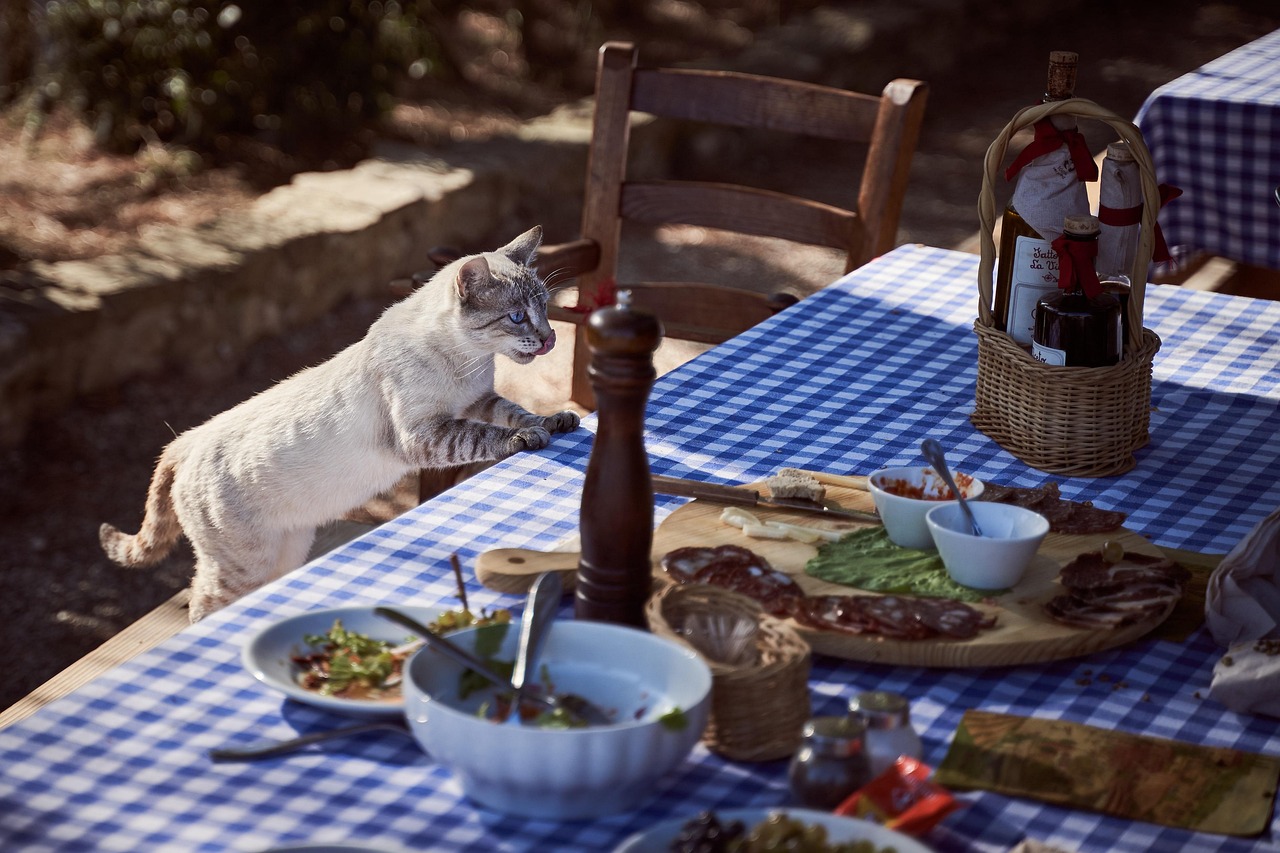
Responding appropriately to your cat’s licking behavior can strengthen your bond and create a more harmonious environment. Here are some strategies:
Encourage Affectionate Licking
If your cat licks you affectionately, respond with gentle petting or praise. This positive reinforcement encourages the behavior and helps build trust between you and your pet.
Avoid Negative Reactions
If your cat’s licking becomes excessive or bothersome, avoid scolding or pushing them away. Instead, redirect their attention with toys or interactive play. This approach helps mitigate excessive licking without creating negative associations with your presence.
Create a Calm Environment
To reduce stress-related licking, ensure your home is calm and comfortable for your cat. Provide cozy hiding spots, vertical spaces for climbing, and interactive toys that stimulate their mind. A peaceful environment can help alleviate anxiety and improve overall well-being.
When to Seek Professional Help
If you observe significant changes in your cat’s licking behavior that persist despite attempts to address them, it may be time to seek professional help. A veterinarian can conduct a thorough examination to determine if there are underlying health issues contributing to the behavior.
- Behavioral Specialist: If stress or anxiety seems to be the root cause, a certified animal behaviorist can provide tailored strategies for behavioral modification.
- Veterinary Care: Regular check-ups can help catch any health problems early on and maintain your cat’s overall health.
Understanding Licking in Different Breeds
Different cat breeds may exhibit varying licking behaviors due to their unique characteristics and temperaments. Recognizing these differences can help you understand your cat better. Here are a few examples:
Persian Cats
Persians are known for their long, luxurious fur, which they groom regularly. Their licking behavior is often more focused on self-grooming. These cats spend considerable time ensuring their coats remain clean and tangle-free. If you notice a Persian cat licking you, it may also be a sign of affection, but it’s essential to provide regular brushing to keep their fur healthy.
Siamese Cats
Siamese cats are known for their social nature and vocal tendencies. They may use licking as a means of bonding with their owners. If a Siamese cat licks you, it is likely showing that it enjoys your company and wants to create a stronger connection. This breed often thrives on interaction, so engaging in playtime can deepen your bond.
Maine Coon Cats
Maine Coons are one of the largest domesticated cat breeds and are known for their friendly disposition. Their licking behavior can be both affectionate and exploratory. They may lick you to bond or investigate unfamiliar scents on your skin. Providing them with a stimulating environment can help curb any excessive licking that arises from boredom.
How Licking Affects the Human-Cat Bond
The act of licking can significantly enhance the bond between a cat and its owner. This behavior often fosters feelings of trust and love. Here’s how licking affects your relationship with your feline companion:
- Reinforces Trust: When your cat licks you, it is a sign that they trust you. This trust is vital for a strong human-cat bond.
- Encourages Interaction: Licking often leads to more positive interactions, such as petting and cuddling, which further strengthen the relationship.
- Promotes Understanding: By observing your cat’s licking habits, you can better understand its emotional needs, allowing for more effective communication.
Training Your Cat to Reduce Excessive Licking
If
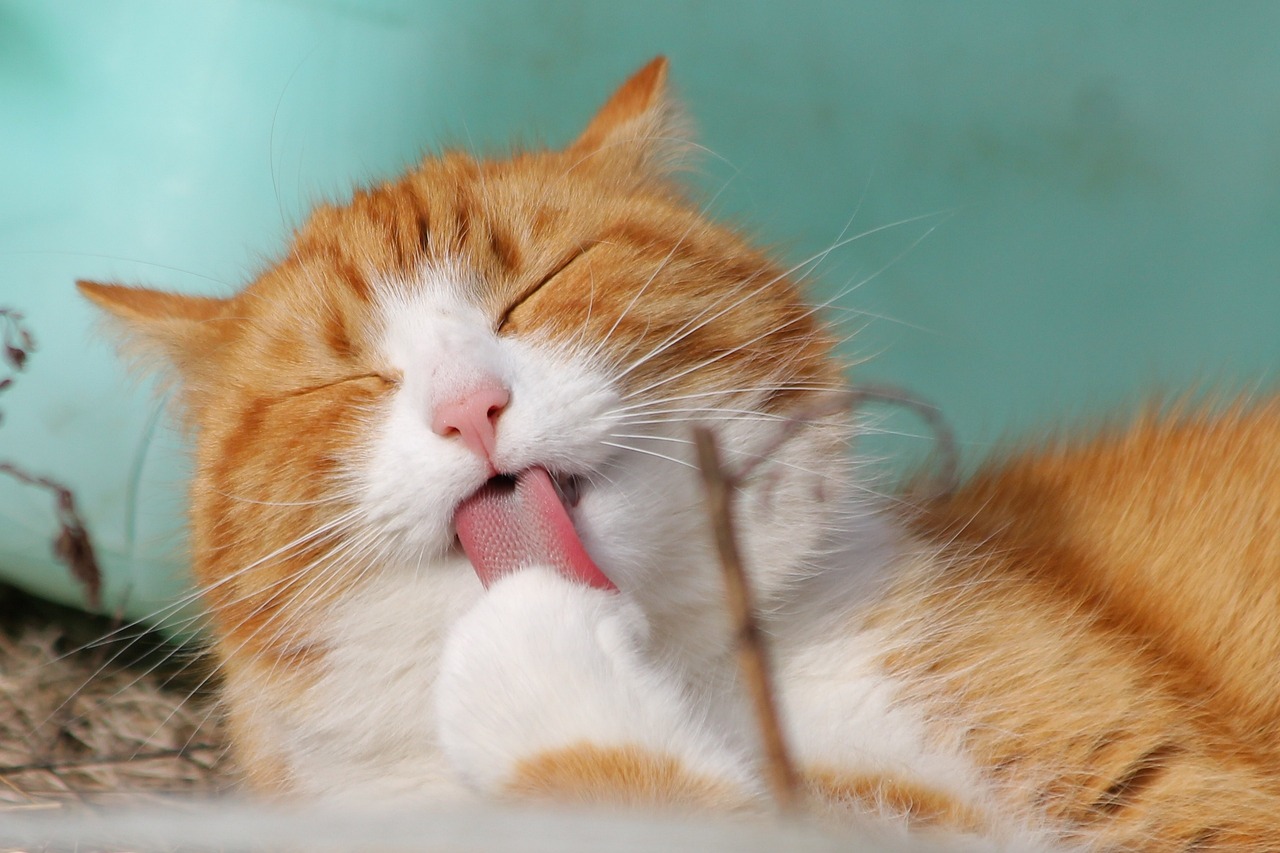
excessive licking becomes an issue, training can help modify this behavior. Here are some tips to guide you:
- Positive Reinforcement: Reward your cat for not licking excessively with treats or praise. This approach encourages desired behavior.
- Redirect Attention: When your cat begins to lick excessively, redirect its attention to toys or playtime to distract it from the behavior.
- Create a Routine: Establishing a daily routine can help your cat feel more secure and less anxious, reducing the urge to lick excessively.
Final Thoughts
The behavior of licking in cats can reveal much about their emotional state and needs. While it often signifies affection and bonding, it can also indicate stress or health issues if excessive. Understanding the context of your cat’s licking behavior, including body language and breed traits, can enhance your relationship with your feline friend.
As a responsible pet owner, being attentive to changes in licking habits is crucial. If you observe excessive licking or other concerning behaviors, consulting with a veterinarian or animal behaviorist can provide valuable insights and solutions. By fostering a calm environment and engaging positively with your cat, you can ensure they feel secure and loved.
Ultimately, the bond between you and your cat is built on trust, understanding, and mutual affection. Embracing the nuances of your cat’s licking behavior will lead to a deeper connection and a happier life for both of you.

